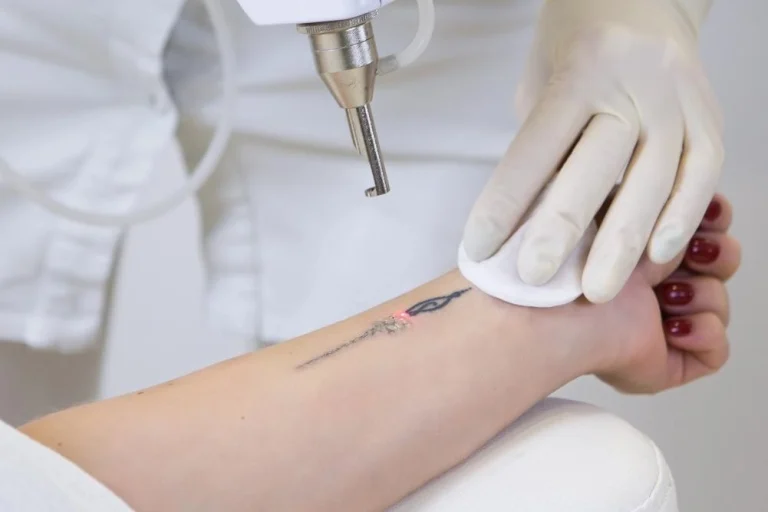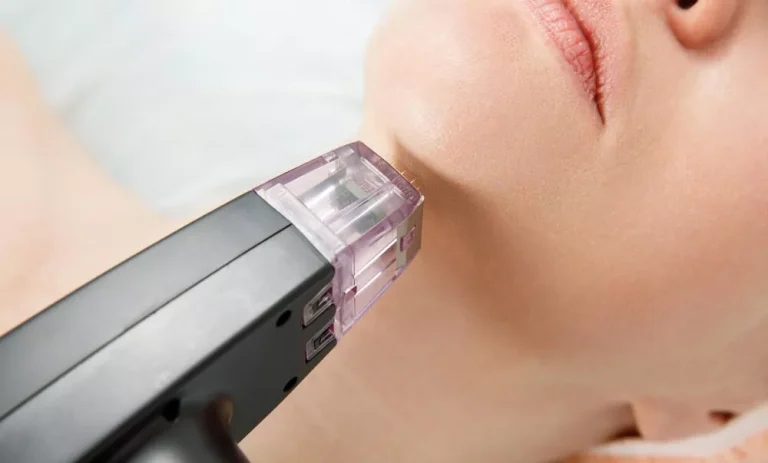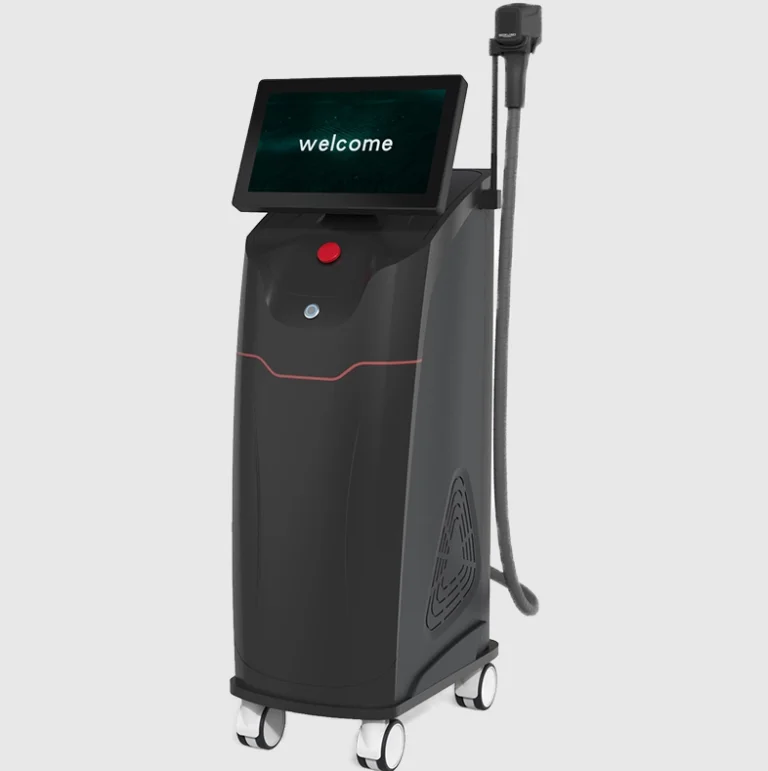Understanding Aesthetic Laser Technology: The Basics
Principles of Laser Physics in Aesthetic Applications
LASER means “Light Amplification by Stimulated Emission of Radiation.” It’s a tool that sends out a strong, focused ray of light. This light can zero in on certain colors or pigments, like melanin in skin or ink in tattoos. When the light hits these targets, it turns into warmth. This warmth breaks down the target without hurting the nearby skin.
Another important thing is how long the laser pulse lasts. It needs to match the thermal relaxation time (TRT) of the target. TRT is how long it takes for something to cool down by half through spreading heat. Tiny targets, like tattoo ink, need quick, short pulses. Bigger ones, like hair follicles, need longer pulses.
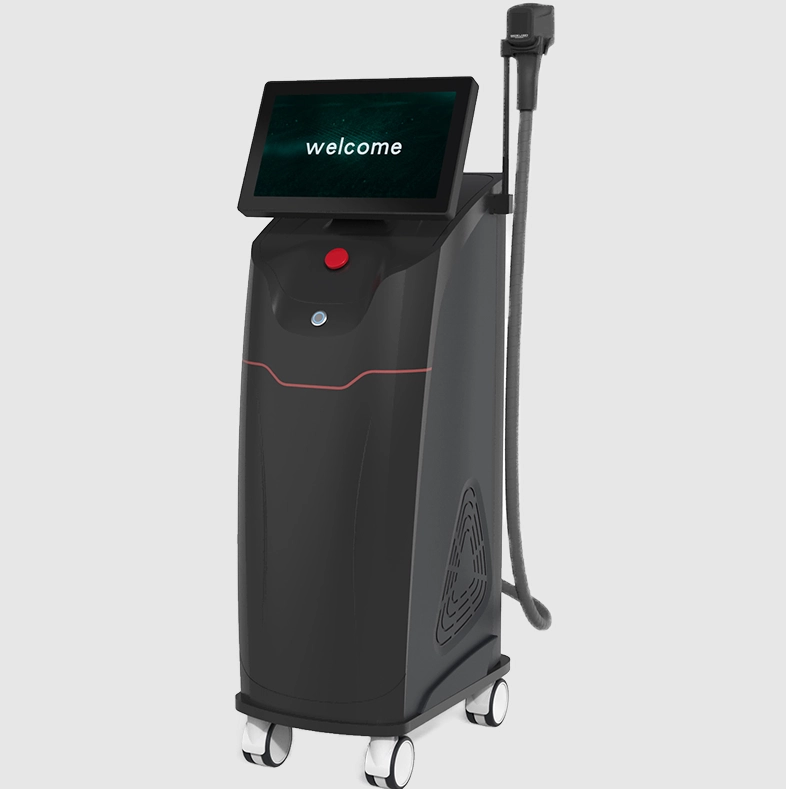
Key Components of Aesthetic Laser Devices
Aesthetic laser tools often have a laser source, a handpiece for delivery, a cooling system, and a control panel. Modern setups also come with safety features, options for different wavelengths, and easy-to-use designs to make treatments more exact and comfy.
Differences Between Ablative and Non-Ablative Lasers
Ablative lasers take off the top skin layer and are used for smoothing skin. On the other hand, non-ablative lasers go deeper without touching the surface. For tattoo and hair removal, non-ablative lasers are mostly used to hit pigments under the skin safely.
Wavelengths and Their Role in Targeting Pigments and Follicles
Different wavelengths reach different depths in the skin and work on various pigments. Here are some examples:
- 532 nm works on red, orange, and yellow colors.
- 1064 nm is great for black, blue, and green inks, and it’s safer for darker skin.
- 808 nm fits most hair kinds.
- 755 nm is good for light, thin hair.
- 1320 nm goes deep to boost collagen.
The 808nm wavelength is a go-to for laser hair removal. It reaches hair follicles with strong power and works well for most skin and hair types.
How Laser Tattoo Removal Works
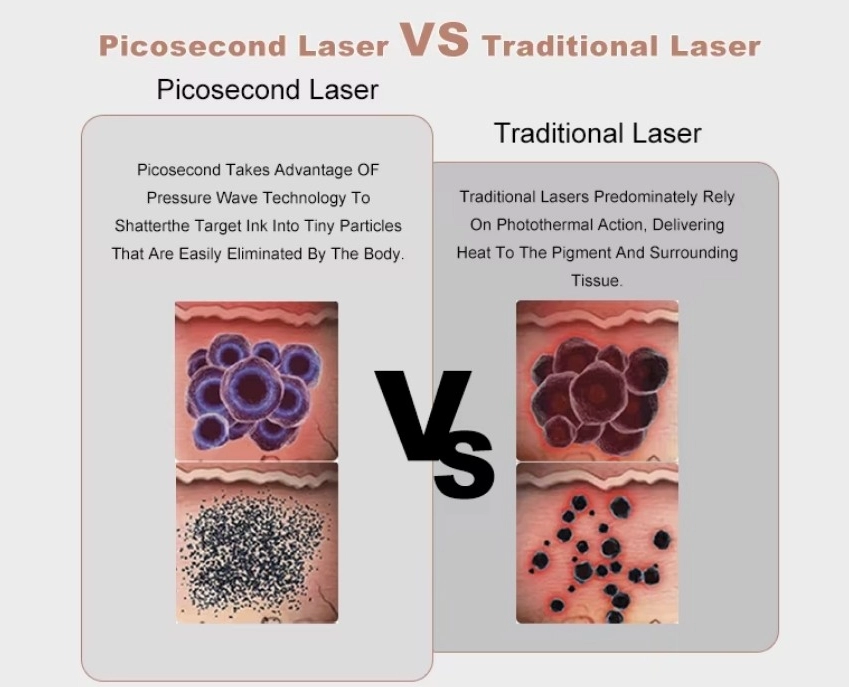
The Science of Selective Photothermolysis in Tattoo Removal
Selective photothermolysis helps lasers shatter tattoo colors without harming nearby skin. Tattoo removal lasers do two things. First, the chosen wavelength warms up the ink, weakening its structure. Then, a strong burst of energy breaks the ink into tiny bits with each visit.
How Lasers Break Down Ink Particles in the Skin
Tattoo ink bits are super small, between 10 and 100 nanometers. They need very quick pulses, often under 80 nanoseconds, to break apart without overheating the skin around them. After that, the body clears these bits out through its lymphatic system naturally.
Factors Affecting Tattoo Removal Effectiveness
Ink Color and Density
Different shades soak up different wavelengths. For instance, 532nm is a short wavelength that works well on red, orange, and yellow tattoo colors since it’s easily absorbed by melanin and hemoglobin. Meanwhile, 1064nm targets black, blue, and green tattoo inks.
Skin Type and Location of the Tattoo
Skin tone changes how the laser is absorbed. Darker skin needs longer wavelengths, like 1064 nm, to prevent damage from melanin soaking up too much energy.
Number of Sessions Required
You’ll need several visits since tattoos have layers of ink at different depths. The body also needs time between each session to clear out the broken ink bits through its lymphatic system.
How Laser Hair Removal Works
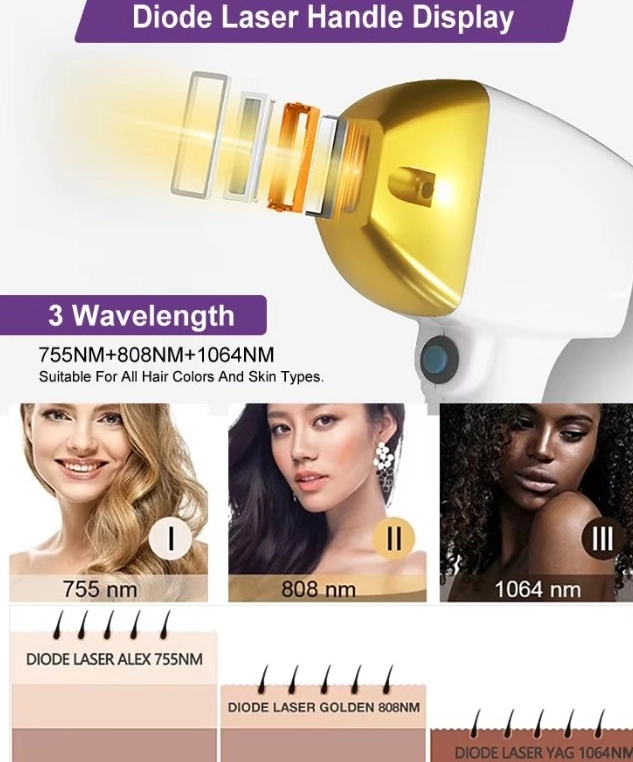
Targeting Melanin in Hair Follicles with Laser Energy
Hair removal lasers aim at the melanin inside hair shafts. They’re built to focus on this pigment. When the hair is in its growing phase, called anagen, the heat damages or destroys the follicle. This stops the hair from growing back.
Disrupting the Hair Growth Cycle for Long-Term Reduction
Not all hairs grow at the same time. So, you’ll need multiple sessions over a period. Since body hair is at different stages, several treatments are a must for full laser hair removal.
Suitability Based on Skin Tone and Hair Color
Fitzpatrick Skin Types and Treatment Customization
Longer wavelengths, such as 1064 nm, are safer for darker Fitzpatrick skin types. They don’t get absorbed much by the surrounding skin’s melanin.
Limitations with Light or Fine Hair
Light or very thin hairs have less melanin. This makes them tricky to treat well with regular diode or Nd:YAG lasers.
Can One Laser Device Perform Both Tattoo Removal and Hair Removal?
Multi-Wavelength Systems and Their Capabilities
Yes, if it’s built right. Many multi-purpose laser tools have different handpieces for various tasks. These allow users to change pulse lengths and switch wavelengths to target either tattoo ink or hair follicles as needed.
For the Hair Tattoo removal 2 in 1 machine, the Picosecond Laser Tattoo Removal uses a gem Q-switching mode. It breaks pigment into tiny bits that the body’s cells can clear away.
The quick-freeze hair removal system uses special cooling tech. It avoids issues like strong side effects or skin harm.
Advantages of Dual-Function Laser Platforms for Clinics
Having both features in one saves room, cuts down on buying costs, makes training easier for staff, and gives more treatment choices per patient visit.
Laser Hair Removal and Picosecond Nd Yag Laser Treatment offer great benefits. They’re multi-use, work well together, and give amazing results.
Considerations for Safety, Efficacy, and Treatment Planning
Even though dual-function tools are handy, quality can’t be ignored. The systems must have settings you can tweak to fit each treatment’s needs without risking safety or results.
Why Clinics Trust Arfurla Hair Tattoo removal 2 in 1 machine for Results
Overview of Arfurla’s Technology Portfolio
Arfurla Hair removal+Nd Yag laser 2 in 1 Laser Treatment blends top-notch cooling tech with strong multi-wavelength power, including 755nm/808nm/1064nm. This covers hair removal for all skin types.
For tattoo removal, Picosecond Nd:YAG wavelengths (532nm/1064nm/1320nm) break pigments precisely with little heat damage. It’s good for tattoos, blood vessel marks, acne scars, skin spots, wrinkles, and even skin refresh.
With cooling temps from -5 to 5 °C, treatments feel nicer and safer. CE ISO TUV SUD certification shows it meets global standards while keeping patients comfy during sessions.
welcome to become our distributor
Hangzhou Arfurla Science & Technology Co., Ltd is a cutting-edge firm focused on research and growth. We have our own team for innovation. This lets us offer OEM and ODM services to distributors around the world.
Clinics everywhere aiming to grow their services with trusted gear can gain from teaming up with Arfurla. We’re a well-known leader globally, providing certified beauty solutions with lifelong tech support. Contact us today for best offering.
FAQ
Q: Is laser tattoo removal painful?
A: Many folks say it feels like a rubber band snapping on your skin. But creams to numb the area can make it much less uncomfortable.
Q: How many sessions does tattoo removal take?
A: It depends on the ink’s shade and depth. Usually, it’s around 6 to 12 visits, spaced a few weeks apart.
Q: Can all tattoos be removed completely?
A: Most tattoos fade a lot or vanish after several sessions. But some tough colors might need special wavelengths, like those in Arfurla’s systems.
Q: Is laser hair removal permanent?
A: It gives long-lasting results. However, touch-up sessions might be needed based on hormones or the treated spot.
Q: Can I use one device for both treatments?
A: Yes, with tools like Arfurla’s dual-function machine. It’s made for both uses, with the right wavelengths and pulse times for each type of treatment.

